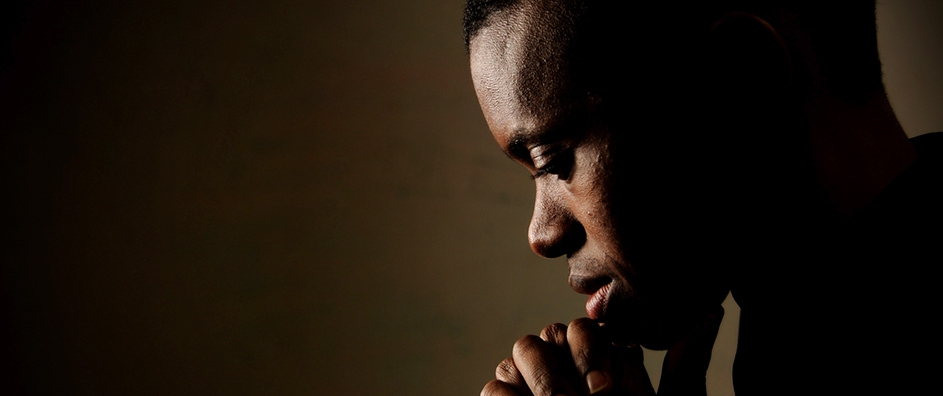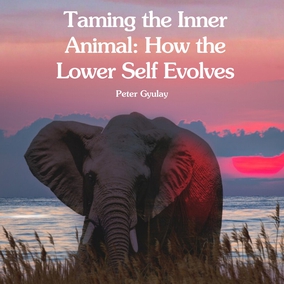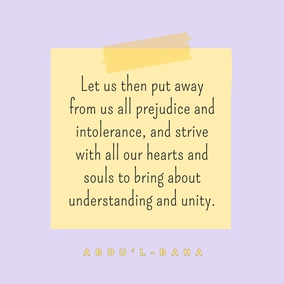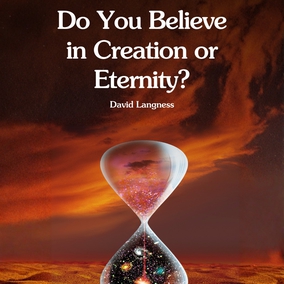The views expressed in our content reflect individual perspectives and do not represent the authoritative views of the Baha'i Faith.
In memory of Richard Preston Jones (1942–2010), American poet.
Question: Through what means can the spirit of man—the rational soul—progress after departing from this mortal world?
Answer: The progress of the human spirit in the divine world, after its connection with the physical body has been severed, is either purely through the grace and bounty of the Lord, or through the intercession and prayers of other human souls, or through the significant contributions and charitable deeds which are offered in its name. – Abdu’l-Baha, Some Answered Questions, newly revised edition, p. 277.
Thoughts are deeds—sometimes. How? Deeds are actions. How can thoughts be actions, too?
There is one special way in which this can be true. We often think of the dead, particularly dear friends and family who have passed away. The Baha’i teachings say that they, too, think of us. Now that’s a thought!
Skeptics might say: “Oxymoron! How can the dead think? Medically, if a person is brain dead, even if his heart is still pumping, he’s clinically dead. The dead and buried are just that—dead and buried. How can they think?”
According to the Baha’i teachings, our human consciousness survives death.

Albert Einstein
I’m no physicist. (Perhaps a metaphysician.) So don’t get me wrong. But I think that Albert Einstein put forth the proposition that energy can never be destroyed, only transmuted into other forms of energy, and sometimes into matter, as expressed in the famous equation, E = MC². Since consciousness is energy, it can never be destroyed. Consciousness lives on. Even so, consciousness will dissipate, unless it is self-aware. If consciousness is not aware of itself in an abstract, fully independent way, it simply lacks the self-identity needed for continued self-awareness. But human consciousness is qualitatively different. Let me explain.Unlike animals, human beings can think in the abstract. Even though animals have the instinct of self-preservation, there is little evidence that their self-identity exists in an abstract, independent way. But human identity is highly abstract and is independently self-aware, to a very high degree. This makes all the difference. The surviving consciousness of human beings, being highly self-aware, not only survives as energy, but continues as self-aware, self-perpetuating energy. Of course, science has yet to prove what religion affirms. Here’s where the “thoughts as deeds” proposition comes into play: The Baha’i teachings tell us that there is a life beyond, that human consciousness survives death. The quality of its survival depends on the spiritual progress of that consciousness here on earth. If the consciousness of the deceased person is predominantly worldly, the adjustment to the next world—which is not material, but spiritual—will be a difficult transition. But if that consciousness has already become spiritual, its transition to the next world will be a joyous one.
I would suggest that “thoughts as deeds” come in three forms with respect to souls in the next world: (1) having good thoughts about someone who has passed on to the next world; leading to (2) prayers for the progress of the soul of that person; and (3) doing philanthropic deeds in the name of that person. Public recognition of philanthropic deeds by the deceased individual also assists in that soul’s progress in the next world. The Baha’i teachings tell us that such thoughts become deeds that will assist in the progress of a person’s soul in the world beyond.
I am now going to think a good thought. May this thought be regarded as a good deed:
For the past several months, I have been thinking about my professor of poetry when I was a student at Pacific Lutheran University. His name was Richard P. Jones. A Harvard graduate and Harvard varsity track sprinter, “Rick” Jones died on September 28, 2010. He published a couple of books of poetry through small presses. Sadly, you cannot find his poems online—it’s as though his creative body of work has vanished. Death by silence.
Professor Jones was my first “gatekeeper,” a teacher who inspired and encouraged me. On April 9, 1973, he wrote a letter of reference on my behalf to the University of Alaska at Fairbanks in support of my application for the Master of Fine Arts program in poetry. In his letter, Professor Jones recounts the following account of a real event that transpired at a poetry reading held at Evergreen State College in Olympia, Washington, involving one of America’s great poets, Gary Snyder:
A brief anecdote from after my return to the seminar might but characterize Chris. Gary Snyder spent a week snowed out here. Chris and a few students managed to get to Olympia to spend an afternoon talking with him. Most of the undergraduates were in the usual awe of “the great one” but Chris, after Gary read a poem full of Eastern references he did not know, asked if he felt it fair to call on a mythology most of the readers had little or no access to; if this wasn’t a bit esoteric or precious. Everybody in the room edged away from Chris, sided with Snyder — you would have appreciated the tension. The question was asked honestly and Gary gave it his fullest attention. For the rest of the afternoon we talked of myth, the lack of a common mythology in this country and the problem that makes for poetry, etc…
This was highly effective storytelling for the purpose of a reference letter. Instead of empty flattery, Professor Jones backed up his recommendation by recounting an actual encounter. By telling this true story, Professor Jones further authenticated and substantiated his recommendation. Ever since, I have used this technique in writing reference letters on behalf of former students.
Professor Jones wrote the following statement on the nature and dynamics of effective poetry:
Poetry tries to express complex thoughts and feelings, with all their contradictions, hopes, fears, doubts and certainties, projections and conjectures—all at once. It is a language beginning in fact but always trying to move beyond that to a more complete, emotional truth. As a poem tries to do all this, it uses every resource of language it can find. It appeals to as many of our senses as the subject might involve, the old “show, don’t tell” bit. But a poem includes more than the visual; it includes sounds: hard and soft, fast and slow, strident or soothing, all to help evoke a mood. It often relies on the histories words carry with them, and our familiarity with those words and their histories to surround us with associations and memories. – Richard P. Jones, “Found in Translation.” Prism 17.1 (Spring 2004): 3.
I can hear Professor Jones’ voice echo and reverberate in these words. True to his character, I recall hearing these very points in his poetry seminar discourses. Now let me tell you about the very first poem that I ever studied in depth. Today (January 24, 2016), thanks to Edward (“Ned”) Walker, Ph.D. (Professor, Department of Microbiology and Molecular Genetics, Michigan State University), I was finally able to read Richard P. Jones’ poem, “Purslane” after four decades of wishing I could read that poem again.
In the next article, “Poems as Treasures, Poems as Deeds,” I’ll introduce and reproduce this excellent poem, with a little commentary.
Next: Poems as Treasures, Poems as Deeds
















Comments
Sign in or create an account
Continue with Googleor